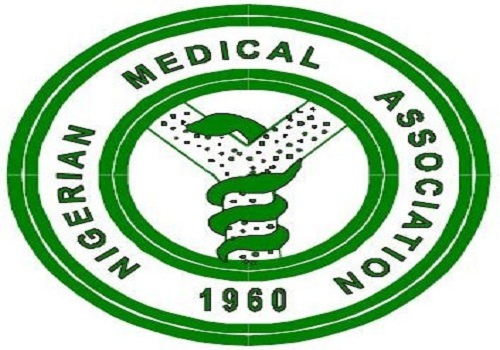Most emergencies require immediate veterinary care, but first aid methods may help you stabilise your pet and increase his/her chances of survival before the veterinarian arrives.
The first step to a successful first aid is knowing your pet’s normal behaviour, because understanding what is normal will allow you to more accurately detect problems when they occur.
Some signs to show that your pet may need emergency care are: pale gums, rapid breathing, weak or rapid pulse, change in body temperature, difficulty in standing, apparent paralysis, loss of consciousness, seizures, deep wounds, excessive bleeding, choking, etc.
When giving first aid to a sick or injured animal, it is of utmost importance to protect yourself from being bitten or scratched. Animals in pain are often unexpectedly vicious. If you are examining a dog for traumatic injury or bandaging a wound, temporarily muzzle it. If no muzzle is available, you can improvise by using a bandage roll or thin strip of clothing.
Cats are a little trickier, but can be restrained by holding the scruff of the neck very firmly, or by rolling them up in a bath towel. You may need to practice this a few times when your pet is healthy and it will be a lot easier if it becomes necessary in an emergency situation.
Wounds and lacerations
It is quite common for our household pets to sustain wounds and lacerations when fighting with each other. At other times, an accident may occur in which they are cut by an object with a sharp edge or even a broken glass. If this happens, clean the wounds thoroughly with clean water and mild soap or dilute disinfectant. Bleeding wounds or wounds that are wide open should be covered with a bandage.
Please, ensure that the bandage is not too tight. The bandage should be changed daily until a veterinarian has examined the wound or advises otherwise.
Diarrhoea and vomiting
Severe diarrhoea or vomiting can be worrisome, particularly in very young or very old pets. Puppies with profuse, foul-smelling diarrhoea may have parvovirus and will need intensive care from a veterinarian to survive.
If your pet has diarrhoea or is vomiting, you can rest their stomach and intestines by withholding food and water for 6-12 hours. When food is reintroduced, give small portions of bland foods like boiled chicken or minced boiled beef, and rice.
If the diarrhoea or vomiting continues or the pet acts ill, contact a vet immediately.
Fractures
Muzzle your pet and gently lay him/her on a flat surface. You can attempt to set the fracture with a home-made splint. A badly-placed splint may cause more harm than good. If in doubt, it is always best to leave the bandaging and splinting to a veterinarian.
In addition, while transporting your injured pet to a veterinarian, use a stretcher, or place it on a board or other firm surface. If possible, secure the pet to the stretcher or board, and make sure you do not put pressure on the injured area or the animal’s chest.
Poisoning
Poisoning is a condition that results from the ingestion, inhalation, absorption, injection, or application of a substance that causes functional disorder of body tissues. The poison can be a plant, a medication given in excess, a cleaning product, or other household chemicals. Examples include cleaning products, rodent poisons and anti-freeze.
If your pet’s skin or eyes are exposed to a toxic product (such as many cleaning products), check the product’s label for information about specific antidotes, and the instructions for people exposed to the product. If the label instructs you to wash your hands with soap and water if you’re exposed, then wash your pet’s skin with soap and water (don’t get any into its eyes, mouth or nose). If the label tells you to flush the skin or eyes with water, do this for your pet as soon as possible (if you can do it safely).
Activated charcoal is another good antidote for poisons because it binds to ingested poisons, reduces the absorption into the body, and aids in the elimination of the poison. I strongly advise everyone to have activated charcoal in their first aid kits.
Early signs of ingestion of poison include increased salivation, unsteady gait, lack of coordination, muscle spasms, etc. Once you notice that your pet has ingested any poison, please administer the activated charcoal. In the absence of activated charcoal, a quick first aid is palm oil, milk or raw eggs.
However, it is advisable that you call a veterinarian immediately.
Seizures
If your pet has a seizure, don’t panic. Protect the pet from injuring itself by moving away any objects (including furniture) that might hurt it. Do not try to restrain the pet during and after the seizure. Do not place your hands near the pet’s mouth. If the seizure lasts more than three minutes, cool the pet with cool water on the ears, belly and feet, and seek veterinary attention at once. Shorter seizures are not immediately life-threatening and a veterinarian can be consulted in due time to diagnose the specific cause and formulate a treatment plan.
Have an exciting weekend.
ABUJA: Training Schedule for Basic Life Support BLS, Pediatric Advanced Life Support (PALS), Advanced Cardiovascular Life Support ACLS, First Aid, CPR, AED
PORTHARCOURT: Training Schedule for Basic Life Support BLS, Pediatric Advanced Life Support (PALS), Advanced Cardiovascular Life Support ACLS, First Aid, CPR, AED
LAGOS: Training Schedule for Basic Life Support BLS, Pediatric Advanced Life Support (PALS), Advanced Cardiovascular Life Support ACLS, First Aid, CPR, AED



